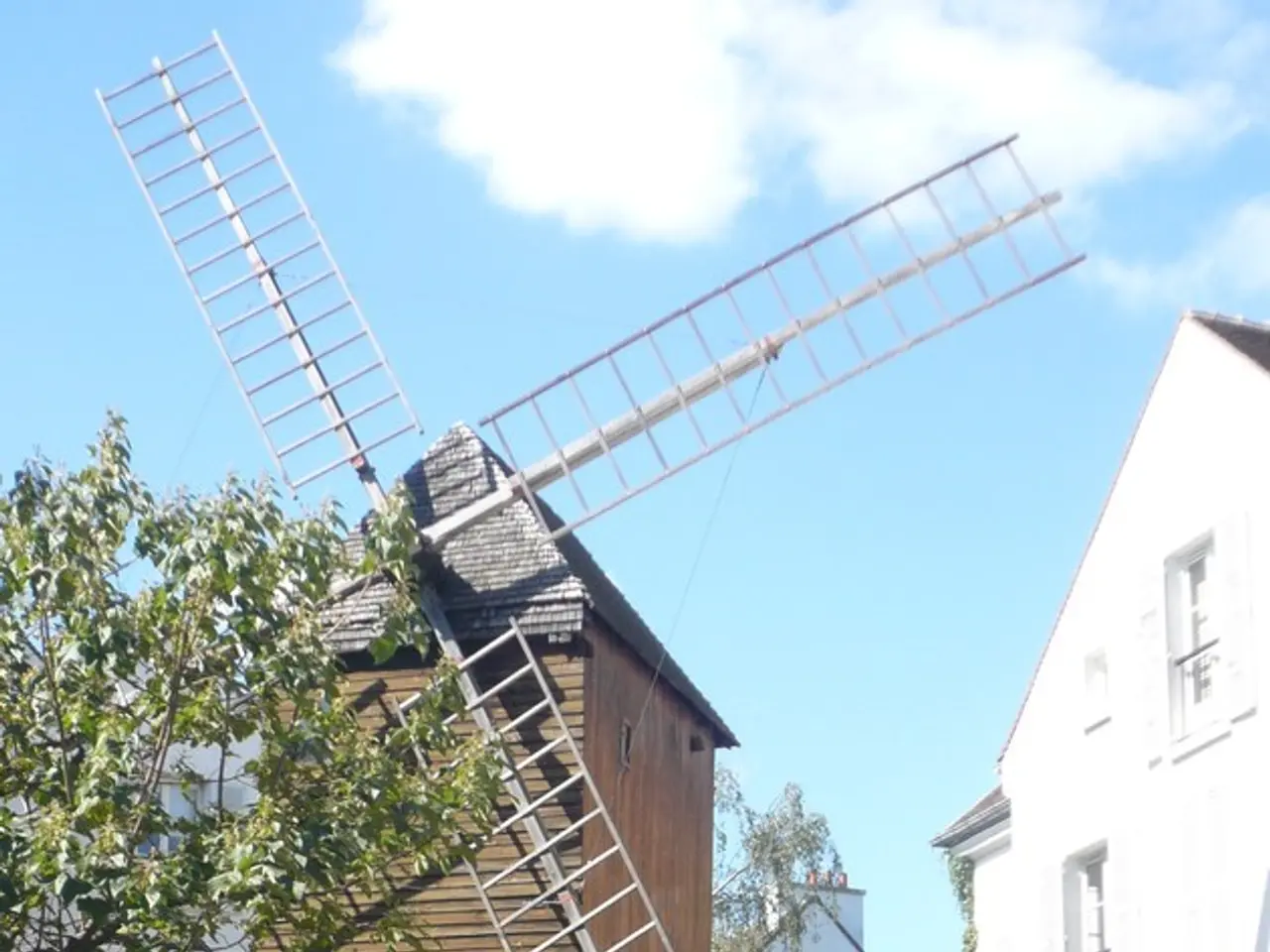Wind energy exploration in Ireland through kite technology
In a groundbreaking development for renewable energy, researchers in Ireland are leveraging giant kites to capture high-altitude winds for electricity production. The pioneering kite-powered wind energy system, developed by Dutch firm Kitepower, is offering notable advantages over traditional wind turbines in scalability, mobility, and efficiency.
The testing site for this venture is located near the small town of Bangor Erris, Ireland, and is the world's first designated airborne renewable energy test site. The system, which consists of a 60-square-meter kite attached to a generator by a cable, acts like a "yo-yo or fishing reel," flying up and reeling in to generate power.
One of the key benefits of Kitepower's system is its mobility. It can be set up in just 24 hours and moved as required without heavy foundations, unlike traditional turbines which are fixed assets, costly to relocate, and constrained by land use planning. The kite system's physical footprint is also much smaller (~6m by 2.5m ground area) compared to turbine sites.
The system's efficiency comes from its ability to harness high-altitude winds, often stronger and more consistent than those available to fixed turbines. The kite flies up to about 400m and reels in to about 190m, generating approximately 30 kilowatts. This high-flying kite accesses stronger winds (up to ~350 m altitude) which traditional turbines, generally limited to hub heights of ~100-150 m, cannot reach, enabling more reliable and higher capacity factors.
Kitepower's system is also highly scalable, suitable for flexible deployment in both remote and distributed renewable networks, including off-grid communities or construction sites where rapid or temporary setups are needed. This contrasts with large traditional turbines that require significant civil works and long planning.
The electricity generated by the kite system is stored in batteries, similar to solar photovoltaic systems, with the kite able to fully charge a 336-kilowatt-hour battery. During Storm Eowyn, the kite system provided uninterrupted electricity in Bangor Erris, demonstrating its operational robustness in challenging Atlantic coastal conditions.
However, challenges remain in terms of regulatory approval, safety protocols, and system reliability before widespread adoption. Nevertheless, the team behind the project believes that this technology could spark a "revolution" in wind energy and help Ireland cut its reliance on fossil fuels.
Ireland's wind energy sector is already making significant strides, with Irish wind farms currently providing about one-third of the country's electricity. The sector aims to deliver 20 gigawatts of offshore wind energy by 2040 and at least 37 gigawatts by 2050. The ability of airborne wind energy systems to harness high-altitude winds with relatively low infrastructure requirements makes them suitable for remote, offshore, or mobile applications, further boosting their potential contribution to Ireland's renewable energy goals.
- The environmental science community is interested in the potential impact of Kitepower's kite-powered wind energy system on the renewable energy industry, given its ability to harness high-altitude winds for electricity production.
- The financial industry is keeping a close eye on Kitepower's venture, as the system's scalability, mobility, and efficient energy capture could offer significant cost savings compared to traditional wind turbines in certain applications, such as off-grid communities and temporary setups.
- As technology continues to advance, Kitepower's innovative kite-powered wind energy system may find applications in various sectors, including the energy industry, where the mobility, adaptability, and high-altitude wind harnessing capacity could provide a more flexible and efficient solution for renewable energy production.




